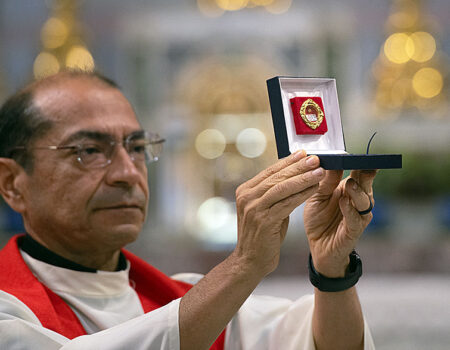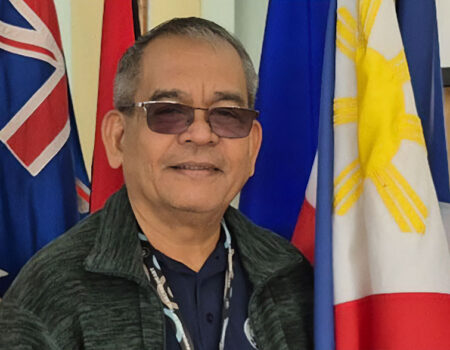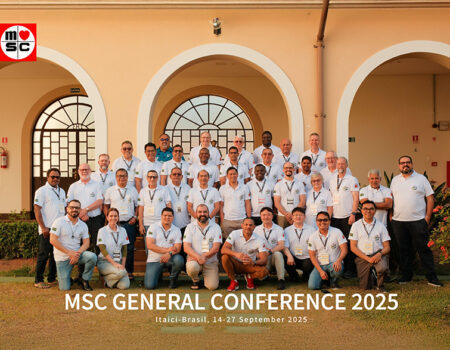Chevalier Family: Growing our Charism
Wednesday June 25, 2025
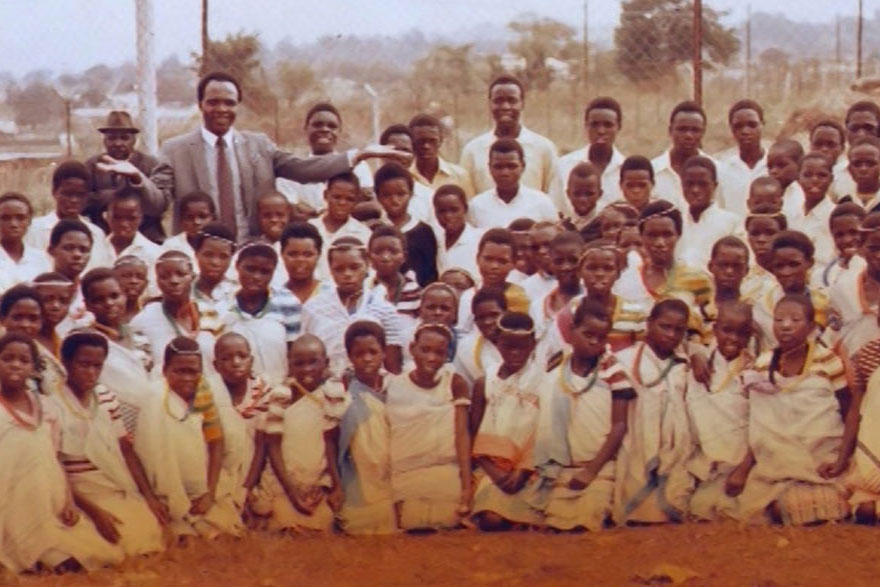
Charism: A Gift of the Spirit
“Charisms are special gifts of the Holy Spirit which are bestowed on individuals for the good of others, the needs of the world, and in particular for the building up of the Church.” (CCCC, 160).
Charisms are personal gifts from God given to be shared for the good of ourselves, others, and the Universal Church. Charisms are God’s way of allowing the uniqueness of each person to become crucial for the common good and to draw people together into an understanding of how to live and love as God would. This is what Fr Jules Chevalier did in 1854: he took his personal gift and shared it with his community, thereby founding the Missionaries of the Sacred Heart (MSCs). Later, Mother Marie Louise Hartzer and Fr Hubert Linckens saw an alignment between their own personal gifts and those of Jules, joining his community and founding the Daughters of Our Lady of the Sacred Heart (FDNSC) and the Missionary Sisters of the Most Sacred Heart of Jesus (MSC Sisters).
A charism provides a community with a common story to enter, a common language to speak, a group to belong to, a way to pray, a work to undertake, and a face of God to see (Marechal, 2000). In our Chevalier Family, the MSCs, FDNSC, the MSC Sisters and the Laity of the Chevalier Family work together as interconnected branches, sharing the same charism, but each in their own distinctive way.
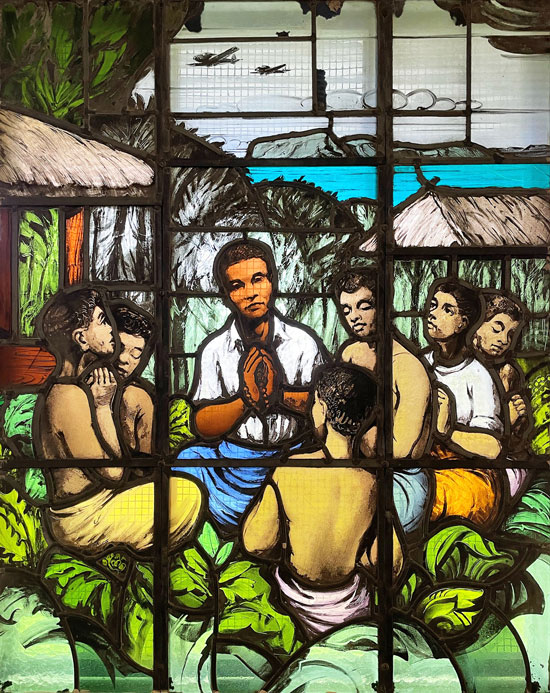
A Common Story to Enter
The Chevalier Family’s common story begins with Fr Jules Chevalier, a French priest in the 19th century, with a mission to make the love of the Heart of Jesus known everywhere. The MSCs, the FDNSC, and the MSC Sisters also have their own rich histories, stories marked by growth, renewal, and faithfulness to that original mission.
We, as the Laity of the Chevalier Family, must capture our own story, which builds upon the inspiration of Fr Jules Chevalier and acknowledges the work of the many religious who have paved the way, formed and developed us. It must capture our journey, as lay groups across the world, as national lay councils, and as one international lay family, connected but autonomous to the other branches of the Chevalier Family.
In recent years, we have seen the emergence of two characters in the story of the Laity: Blessed Peter To Rot 2 (1912 – 1945) and Blessed Benedict Daswa1 (1946 – 1990). Both were members of the Laity of the Chevalier Family before our formal movement was established. Their courageous lives and ultimate sacrifices offer profound inspiration to us all. We must begin to collect and share the stories of those who have lived as Chevalier Family Laity, as these examples guide and encourage us in living out our faith and mission today.
A Common Language to Speak
As we continue to break down language barriers through our use of volunteer translators and AI translations, we must still wrestle with developing a common language. A language that is inclusive and heart-centred. A language that celebrates our differences, respects our cultures, and unites us as one family. A language shaped by the Spirituality of the Heart.
As a branch of the Chevalier Family, our language must reflect this connection whilst also confirming our own identity as laity. We are not separate from the wider Chevalier Family. Yet, we bring a unique voice, a lay perspective grounded in everyday experience, community life, and a commitment to living out the Spirituality of the Heart in the world. Our language, therefore, must bridge tradition and contemporary relevance, expressing both our shared mission and our particular lay vocation. It should speak to the sacredness of ordinary life, the dignity of every person, and the hope we bring as we care for our common home.
We recognise the presence of God in every person, and we honour this by choosing language that is inclusive, respectful, and affirming. We do this by using gender-neutral expressions, avoiding divisive or limiting labels, and always speaking in ways that foster belonging and dignity. In doing so, we create a space where everyone feels seen, heard, and valued. The language of the Heart becomes a language of unity, healing, and transformation.
A Way to Pray
As Laity of the Chevalier Family, we are called “to be on Earth the Heart of God”. This apostolic work must be continually nourished by prayer, whether through traditional forms such as devotions and community prayer, or through more contemporary practices such as meditative contemplation and time spent in Creation.
Spirituality of the Heart invites us on a journey of inner transformation, encouraging us to trust in God and be open to the Spirit’s movement in our daily lives. Fr Jules Chevalier himself contemplated the Heart of Christ in whom is revealed the compassionate love of the Father; he discovered there the remedy for the ills of the world (MSC Constitutions, #3-4).
For us lay people, without a religious community to support the deepening of our spirituality and inner life, we must find ways to engage in contemplative prayer. By silently dwelling in the presence of God, we allow our spiritual lives to be enriched and strengthened, enabling us to embody the Heart of God in our everyday actions and relationships.
A Work to Undertake
It is no accident that the charism shared by Fr Jules Chevalier can be found in many countries around the world. This charism calls us to reveal God’s love to all people, especially those who are most in need. To love everyone where they are at, without any expectation or judgement. We, as laity, are called to do this wherever we are – In our workplace, in our homes, and in our communities.
At the last International Assembly, I asked that we understand and recognise our responsibility to Creation as world citizens, as Catholics, and as Laity of the Chevalier Family. We must raise our voices and act for change. We must recognise that Creation powerfully reflects a God of life and relationship and reminds us of our sacred task of preserving and protecting Creation from which all life comes.
The reality of this work is challenging. While we do not need to travel overseas to become missionaries, we carry out this work in an increasingly secular society, wherever we are. We need to live counterculturally, to show God’s Heart on Earth. We must commit to upholding human dignity, peace-building, and caring for Creation in all aspects of our lives.
A Face of God to See
God’s face is most visible in Jesus’ compassionate Heart – especially in those experiencing poverty, suffering, and marginalisation. It is in the simple, everyday encounters of life among family, friends, colleagues, and amidst the challenges of the modern world that we witness God. It is through these human relationships, expressed through gentle acts of love and kindness, that we see the Heart of Jesus and the face of God.
To truly embody this compassion, we must open our hearts and minds to listen deeply to the stories of others. We are called to spend time with them, to walk alongside them on their journey, and to share in both their struggles and their hopes. In doing so, we become more attuned to experiencing God living within them.
At the same time, we must also be aware that God dwells within us. Our actions, words, and attitudes must reflect this sacred reality so that others can see God’s face shining through us. By living in this awareness, we become living signs of God’s love and mercy in the world, bridging divides and fostering a more profound sense of connection and belonging for all.
Where to From Here?
We must continue to develop this charism to ensure it is evident in everything we do and to ensure that these aspects all point not just to community, but through community towards God. Indeed, if “charisms are special gifts of the Holy Spirit which are bestowed on individuals for the good of others, the needs of the world, and in particular for the building up of the Church” (CCCC, 160), then we must be clear on our shared and emerging charism and be able to articulate what it is so that we can share it with the world.
References
Marachel, C. (2000). Toward an effective partnership between religious and laity in fulfilment of charism and responsibility for mission. Charism and Spirituality, Proceedings of the 56th Conference of the Unione Superiore Generali, Rome.
Aidan Johnson (Australia)



